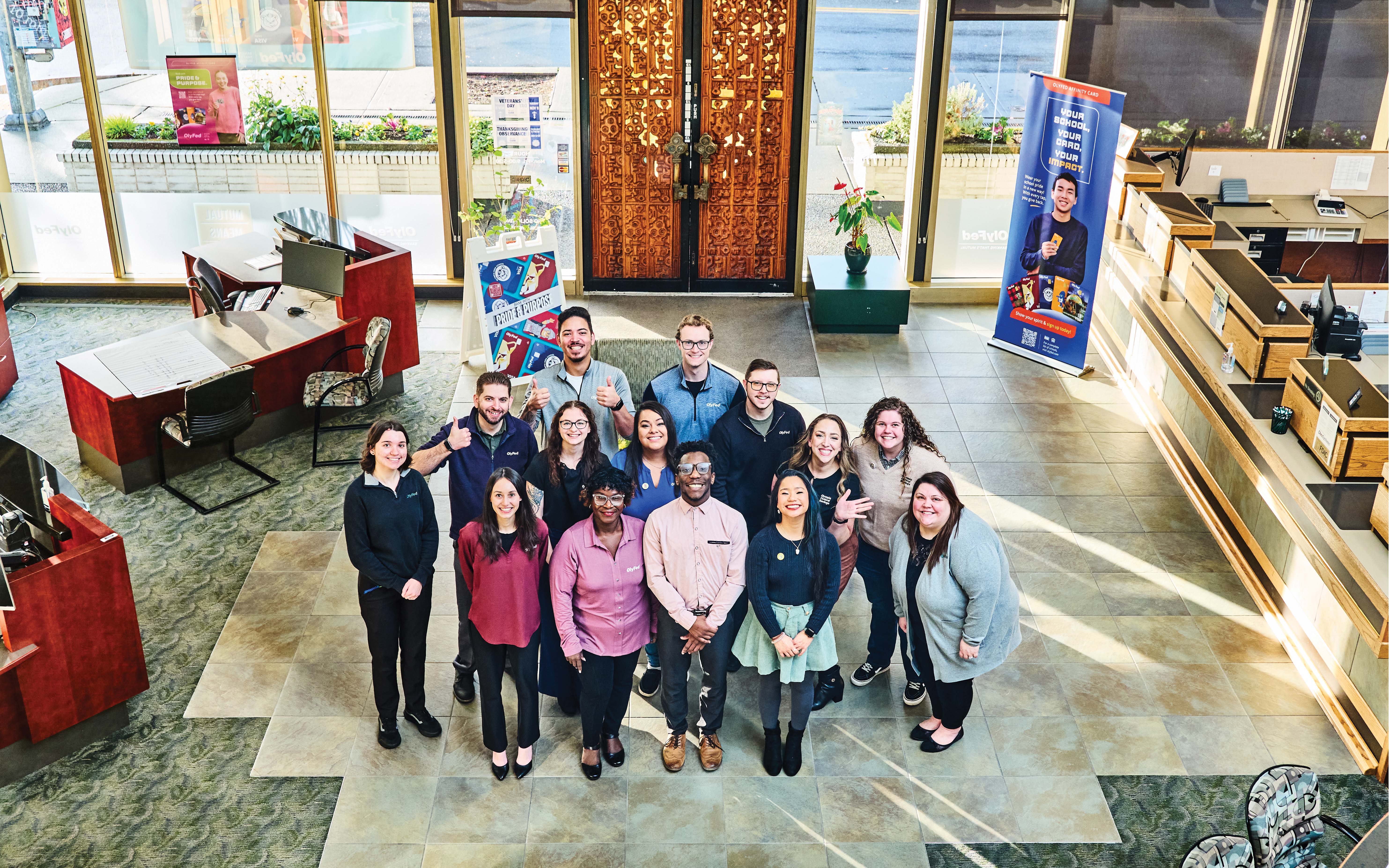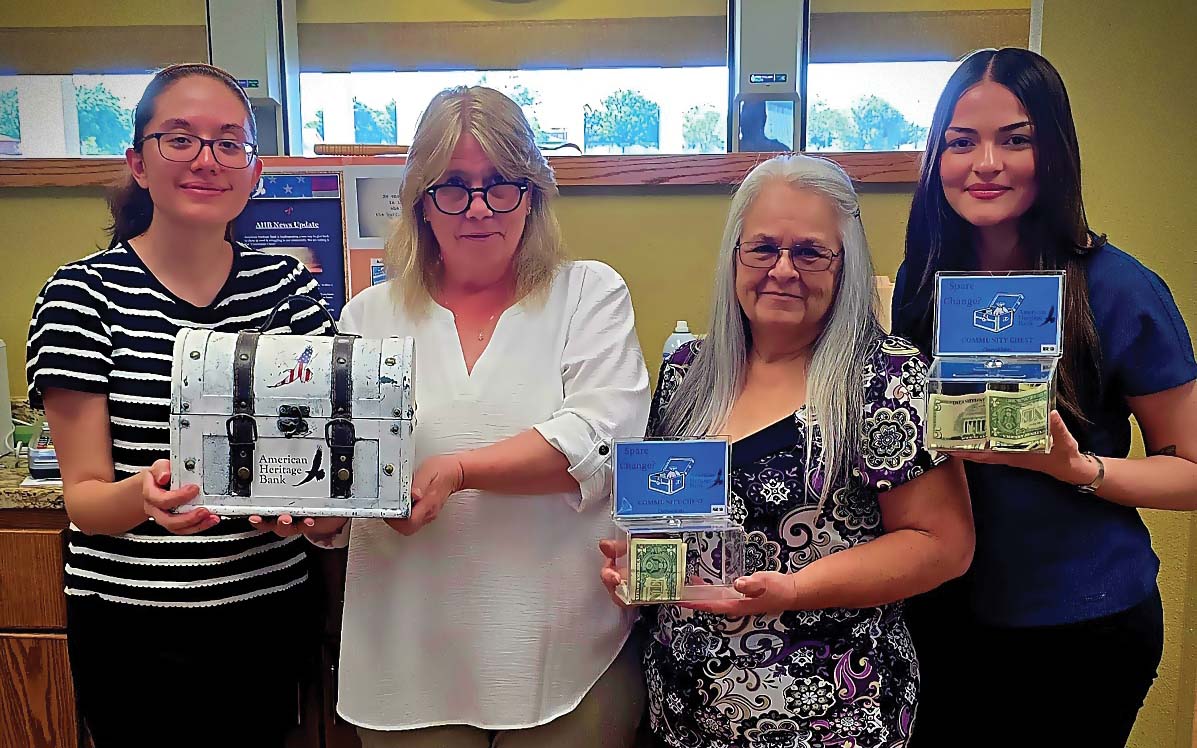Culture keeps a workplace and its employees running—whether they know it or not. From values and practices to the way colleagues interact, culture drives a community bank from the inside out. Learn what it means to these community banks, and discover the practices they established to maintain a positive culture at each branch.
Workplace Culture: A Make or Break for Community Bank Employees?
May 01, 2025 / By Mindy Charski
Culture keeps a workplace and its employees running—whether they know it or not. From values and practices to the way colleagues interact, culture drives a community bank from the inside out. Learn what it means to these community banks, and discover the practices they established to maintain a positive culture at each branch.
Jay Bearden once heard someone say that the number one job of a CEO is to maintain the culture. “That struck me, because I’m much more of a numbers person,” says the president and CEO of $1.1 billion-asset Legend Bank in Bowie, Texas. “I thought, ‘Well, that’s kind of a squishy thing.’”
Bearden was intrigued and explored the concept further. He now recognizes that every workplace invariably has a culture: the mix of values, mission and practices that guide behavior and decision-making. He has powerful incentives to make his community bank’s culture a good one.
“Whatever mission you’re trying to accomplish, whether it’s growth, whether it’s a certain level of profitability or whatever it is, that’s the fruit of [your] culture,” Bearden says. “For me as the CEO, with a strong culture, it makes attaining those goals a lot easier.”
Building and maintaining a robust culture looks different for each organization, but it can be instructive to explore ways other community banks integrate culture into their everyday practices. We talked to three community banks about how they build strong cultures.
Hiring with culture in mind

A strong culture is one in which “everybody is going in the same direction and trying to achieve the same things,” says Bearden. Keeping culture front and center when considering job applicants can make that goal more attainable and potentially reduce turnover.
Candidates “really have to fit” with the culture of $1 billion-asset Seattle Bank, according to John Blizzard, president and CEO. He says the Seattle-based bank’s business model includes boutique banking and thrives on innovation, collaboration, transparency and continuous improvement. Workers accustomed to what Blizzard calls a “very narrow job that they just repeat” aren’t generally a good match for the bank. “With our culture, you just have to do a wider job and be ready for change, and you kind of have to like it,” he says. “At the end of the day, you’ve got to embrace it, or you’re not going to do well.”
Indeed, the “soft skills” that an organization values can be hard to teach, says Valerie Utsey, ICBA EVP and chief people officer. “I can teach you how to be a teller better than I can teach you how to be in a fast-paced [environment], multitask and be OK with change,” she says. “You’ve got to be able to bring that skill set along.”

Set cultural expectations
While the recruitment process should introduce candidates to an organization’s culture, onboarding should provide “reassurance” that new employees made the right choice based on culture, Utsey says.
At $848 million-asset First Community Bank, a division of Glacier Bank, new hires spend their first day focused singularly on the Layton, Utah, bank’s culture. “We don’t even touch any other training until day two,” says Brady Stratton, senior vice president and marketing director.
New employees see a presentation about First Community Bank’s culture, which has four pillars: education, accountability, profitability and recognition. They also get their first chance to experience its collaborative nature by having breakfast with the executive team. According to Stratton, First Community Bank wants new hires to know they are important to the company and to see they have access to leadership.
The gathering also helps “set the tone” for their journey, he says, and provides an opportunity to make sure their personal values align with the bank’s values. “This rarely happens, but if you don’t have values aligned, then it’s probably not the best place for you to work, because those values are crucial to our success and getting along with each other,” Stratton says.

Employees weigh in
The proof is in the numbers—culture can make or break a workplace.
32%
of workers say a positive organizational culture is the most important nonfinancial workplace benefit.
Of employees who have a positive culture at their job,
82%
say they’re likely to recommend their organization to someone looking for a job.
83%
say they are deeply motivated to deliver high-quality work.
Of those facing a negative work culture:
57%
say they are actively or soon will be looking for a new job.
27%
have quit a job because they didn’t feel comfortable sharing their personal viewpoints and stances at work without judgment or discrimination.
47%
of workers who have left a job within the first 90 days cite “poor company culture” as a reason for leaving.
Sources: Wiley Workplace Intelligence, SHRM, Randstad, Employ
A chance to speak up
Onboarding isn’t the only time employees can communicate with leadership at First Community Bank. They’re invited to share their thoughts on what the upcoming year’s strategic plan should look like, for example. “We realize that they’re the ones that will make the plan come to fruition,” Stratton says, “so they should have a say in there, right?”
Employees can also participate in an anonymous survey each year about the bank’s culture, which Stratton likens to an “annual checkup.” It helps the bank gauge trends—either positive or negative—in areas like communication, training, leadership and processes.
“I would comfortably say that like 80% of the major changes we’ve made personnel-wise for the bank in the past nine years have come from feedback from that culture survey,” Stratton says. “Our employees feel like they do have a voice and that they have a channel for communicating their ideas and seeing those ideas implemented, which is really cool.”
Employees have shared, for example, that they want educational opportunities and to learn more about how different areas of the bank operate. First Community Bank responded by creating a leadership academy and a yearlong mentoring program that pairs participants with executive team members.
Meanwhile, Legend Bank also wants employees to “communicate freely,” Bearden says. It was through conversations with employees that the bank learned its paid-time-off policy had some unintentional unfairness to it, which the bank corrected.
Also, after hearing through an anonymous survey that several people thought Bearden talked too long at a previous all-employee meeting, he planned to keep it shorter at the next one. “We’ve got to have an attitude of humility,” he says. “Our executive team, we’ve got like 150 years of combined experience, but we don’t have all the answers.” He recognizes that great ideas can and do come from others, including employees early in their career and those who interact with customers every day.
Encouraging open communication has another benefit for employees and, ultimately, their employers. “You’re ‘buying in’ a lot stronger too if you think you could be heard and make a contribution,” Bearden says.

Reward and recognize
Tying rewards and recognition around a community bank’s core values can help strengthen a positive culture, Utsey says. “You want to ensure that you are recognizing how people get things done and not just what people have done, whether it’s through awards, through your performance management system, through your bonus structure,” she says.
First Community Bank has many ways of recognizing employees. One is enabling staffers to give shout-outs to colleagues. The messages appear on the bank’s intranet and in its weekly internal newsletter. “I think one of the most powerful forms of recognition is just saying ‘thank you’ and recognizing that things are done,” Stratton says.
The community bank also has quarterly celebrations that recognize, among others, employees who have been nominated by coworkers for representing one of the bank’s values.
Team members who get a shout-out or a nomination earn “Shelly Bucks.” They can redeem this internal currency—which is named after the bank’s president and CEO, Shelly Holt—for gift cards or Amazon purchases. Employees can also get Shelly Bucks for other reasons, like when their teams or branches hit their quarterly goals. “We find every opportunity we can to award them, because they’re so motivating,” Stratton says.
In early 2024, First Community Bank introduced another means of recognition that Stratton says has been “wildly successful.” Employees can earn special coins for their years of service and leadership levels. They can also get them for educational efforts, like applying for the bank’s leadership academy or completing another certification.
Employees keep their coin trays on their desks, and adding to their collections has become a popular pursuit. “It’s encouraged some people to get out of their comfort zones and do some things that maybe they wouldn’t have done before, because now there’s recognition to it,” Stratton says.

Culture by design
Seattle Bank finds that having its approximately 100 employees working together in the same building in an open layout facilitates the transparency and collaboration it needs to tackle complex tasks.
Most executives work on the floor near their cross-functional teams rather than in offices. “We’ve had several people say, ‘Wow, I’ve never seen a bank laid out like this. It looks more like a tech company,’” says John Blizzard, president and CEO.
He says the approach improves communication at the Seattle community bank while enabling teams to more quickly solve problems and iterate. “It just has a very, very different feel to it, and it has tremendous energy when you have those folks out on the floor,” Blizzard adds.
Demonstrate empathy
Bearden describes Legend Bank’s culture as one that seeks to enrich employees, not only materially and professionally but also personally, in terms of work-life balance and the relationships they have with each other.
One way some employees experience the bank’s “Legendary” culture is through an association with the Rainy Day Fund. It’s managed by a committee of line-level employees who can distribute up to $1,000 to coworkers facing a financial hardship.
“That is, to me, one of the things I’m most proud of that we do,” Bearden says. “Just helping our own out and doing so in a way where it remains very low key, and nobody’s embarrassed, and nobody’s trying to get credit for anything.”

Team efforts start at the top

Leaders who want to successfully embed culture in their organizations have three mandates, according to the analyst firm Gartner. They need to help employees understand the culture’s core values, ensure workers know the behaviors they should be demonstrating, and make the processes that govern employees’ work support the culture.
But above all, as Stratton notes from experience with his own bank’s executive team, leaders need to be committed to creating a positive culture and setting a good example themselves.
First Community Bank has also found it advantageous to enlist others in the effort. Volunteers from different levels, departments and branches of the bank serve as “culture representatives” who meet weekly to share employee feedback and ideas. Stratton says members of this team “are a key part of making sure [the] culture stays healthy and vibrant and doesn’t just flatten out.”
This intentional focus on culture has boosted the bank’s retention and contributes to employee satisfaction, he says. “We’re with our ‘work’ family more than we are our ‘family’ family sometimes, and you want to make sure that [the workplace] is a place where people feel safe and feel like they can excel and succeed,” Stratton adds. “Culture is a huge part of that.”
6 more ways to build positive culture
Encourage employee resource groups (ERGs). ERGs can help build connection and support among workers with commonalities, like parents, new hires and other affinity groups.
Champion community engagement. Organize team service days or, like Seattle Bank, give employees paid work hours to volunteer.
Offer professional development. Staffing consultant Randstad found 38% of workers in financial services say they have quit a job because of a lack of career progression opportunities.
Prioritize civility. “Don’t be a jerk” is a rule Legend Bank shares with new hires, emphasizing that yelling or being combative with fellow coworkers is not allowed.
Assign new team members a pal. Onboarding buddies help fresh faces at Seattle Bank better navigate the company and the culture.
Build community through fun activities. Employees from Legend Bank dress up every year for Halloween and produce fun Christmas videos to highlight the bank’s services and funded projects.
Subscribe now
Sign up for the Independent Banker newsletter to receive twice-monthly emails about new issues and must-read content you might have missed.
Sponsored Content
Featured Webinars
Join ICBA Community
Interested in discussing this and other topics? Network with and learn from your peers with the app designed for community bankers.
Subscribe Today
Sign up for Independent Banker eNews to receive twice-monthly emails that alert you when a new issue drops and highlight must-read content you might have missed.
News Watch Today

Join the Conversation with ICBA Community
ICBA Community is an online platform led by community bankers to foster connections, collaborations, and discussions on industry news, best practices, and regulations, while promoting networking, mentorship, and member feedback to guide future initiatives.













